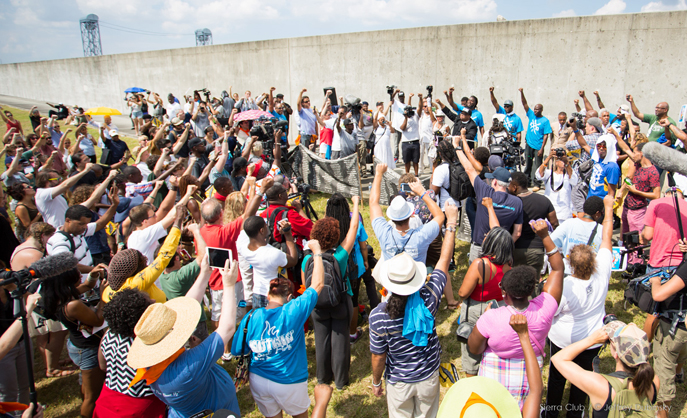
Photo by Jeffrey Dubinsky.
Ten years to the day after Hurricane Katrina slammed into the Gulf Coast and dozens of levees and flood walls protecting the city of New Orleans failed catastrophically, the Sierra Club and local residents held a series of events on August 29 to commemorate Hurricanes Katrina and Rita and articulate a vision for rebuilding, resistance, and renewal.
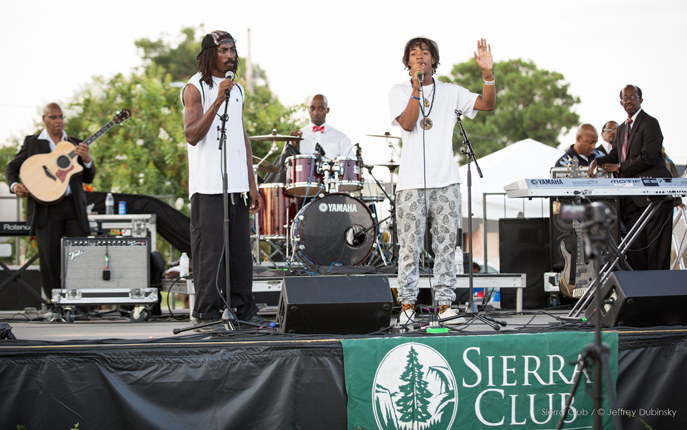
Photo by Jeffrey Dubinsky
The events were led by and for the local community, and while the city hosted official events focused on resilience, local residents chose to commemorate with a different theme: resistance. That's Sierra Club president Aaron Mair, below, with community residents at a rally in the Lower 9th Ward, which was devastated by the storm surge and levee failures on August 29, 2005.
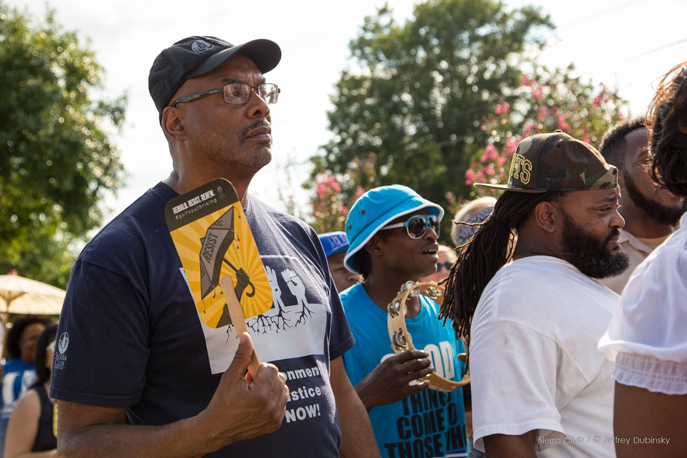
Photo by Jeffrey Dubinsky.
Below, the neighborhood in the immediate aftermath of the levee failure.
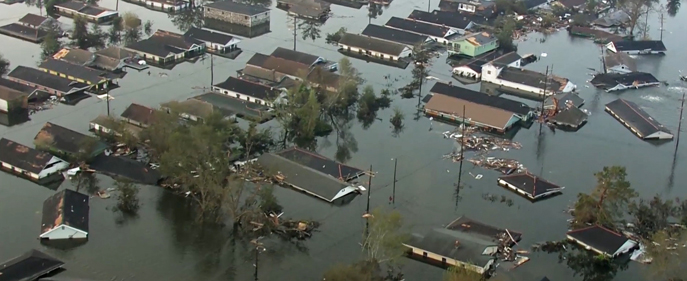
Photo copyright VideoFort/Shutterstock
Ten years after the storm surge and levee failures that allowed tens of billions of gallons of water to rush into the city, killing over 1,800 residents, flooding more than 100,000 homes and businesses, and leaving 80 percent of the city underwater, New Orleans' recovery is much heralded. Today it is one of the fastest-growing cities in the country, with thousands of new jobs, new industries, and increasing property values. But the city has also become whiter, and low-income communities of color like the Lower 9th Ward and the 7th Ward have not shared in the Crescent City's robust recovery. Below, an abandoned home in the Lower 9th Ward.
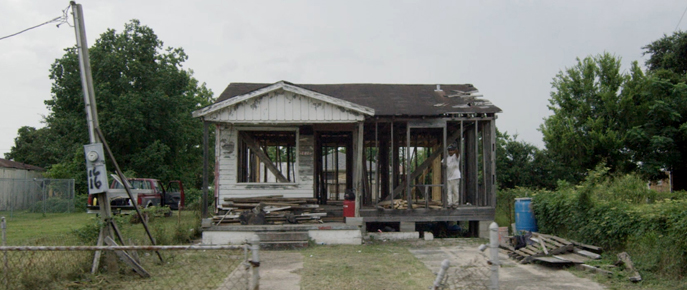
"Katrina devastated one of the most culturally rich parts of our nation, but the fight for survival did not end when the waters receded," Mair says. "For many, it continues to this day. In fact, where much of New Orleans has rebounded to 90 percent of its pre-storm population levels, the four poorest neighborhoods still have less than half of their original population. A warming planet will only increase our risk for more catastrophic weather, putting more communities at risk. We must choose resistance over acceptance."
It is by now widely accepted that the devastation wrought by Katrina was not just the result of a natural disaster; it was also man-made. "An investigation has revealed that the Army Corps of Engineers cut corners when they made decisions about constructing levees -- a choice that ultimately cost more than 1,800 lives," Mair says. "We must speak up now and fight for a better future for the Gulf Coast that is founded on equitable rebuilding, clean energy, and respect for both the planet and our neighbors. That's why the Sierra Club joined with local residents and activists on August 29 to commemorate ten years since Hurricanes Katrina and Rita and sound a call to action to rebuild, resist, and renew the demand for environmental justice."
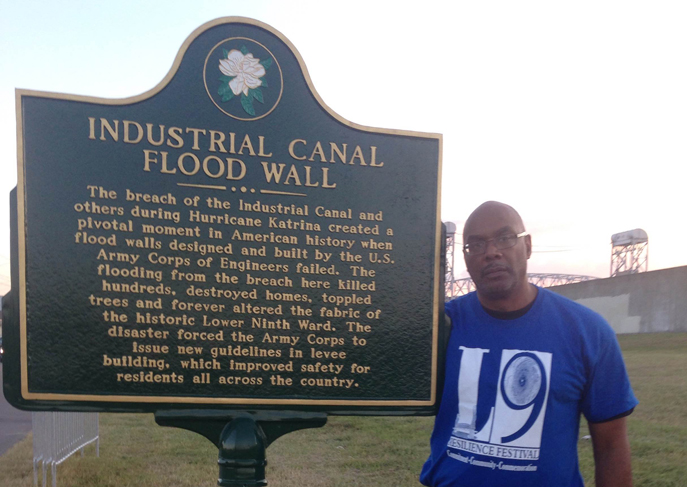
Below, a resident of the Lower 9th Ward speaks at the healing ceremony and remembrance in front of the rebuilt Industrial Canal flood wall.
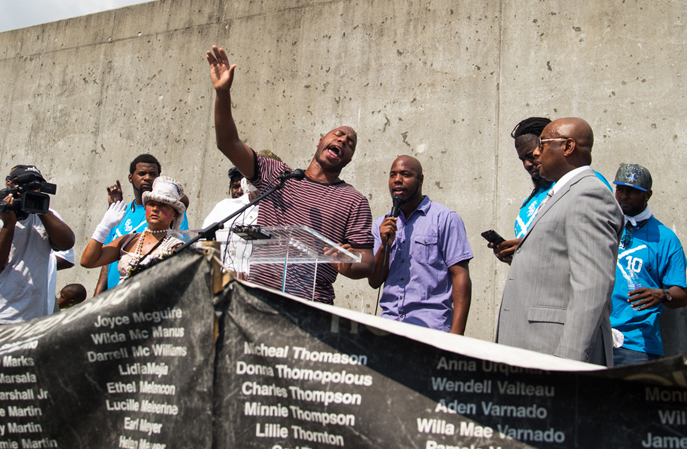
Photo by Jeffrey Dubinsky.
The events of the day commenced at 10:00 a.m. in the Lower 9th Ward at North Jourdan Street and Galvez Avenue (above and below), site of the Industrial Canal levee breach that flooded the neighborhood, with a prayer and healing ceremony that included reading the names of loved ones lost in the Lower 9th. That's Reverend Lennox Yearwood, founder and president of the Hip Hop Caucus, at microphone, below.
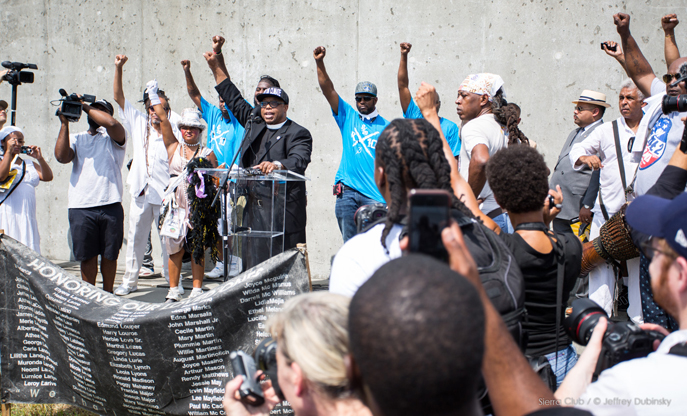
Photo by Jeffrey Dubinsky.
Hundreds of local residents then joined in a second line march for more than three miles through the city to Hunter's Field in the 7th Ward, where the Sierra Club, the Hip Hop Caucus, and the Foundation for Louisiana staged a Rebuild, Resist, and Renew rally featuring a program of speakers and performers that drew more than 5,000 people.
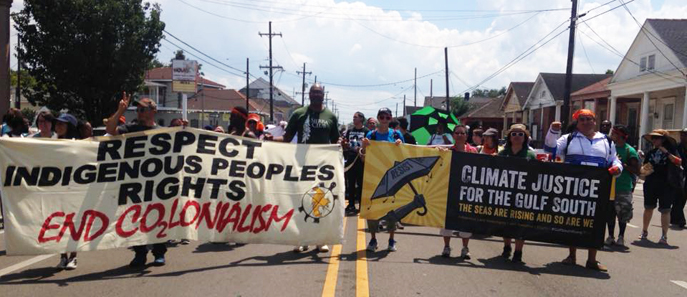
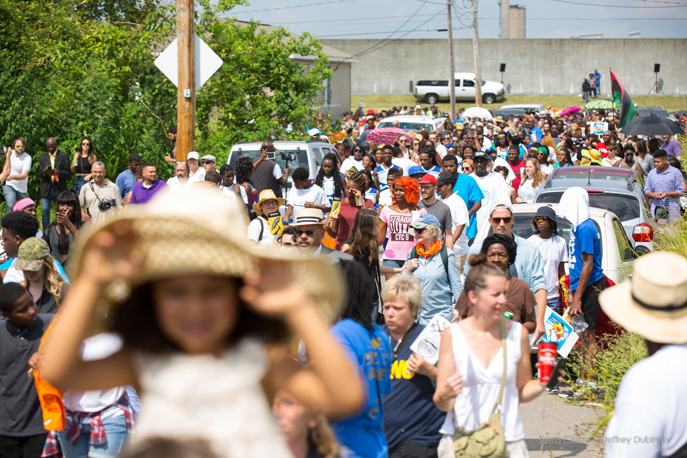
Photo by Jeffrey Dubinsky.
Mair and Sierra Club Executive Director Michael Brune were among the featured speakers. "Make it right!" Mair boomed from the stage. "I marched yesterday with the Big Chief and the Ninth Ward Hunters, and the eyes and ears of the world are open to hear your righteous war cry, 'Make it right!' We will fight for basic protection under the law. We want to be made whole. What has been committed here is a crime. This so-called recovery not only isn't over -- it ain't right. Lower 9 are you with me? We are with you! And we will not fail you. Justice needs to be done by the Lower 9. Make it right!"
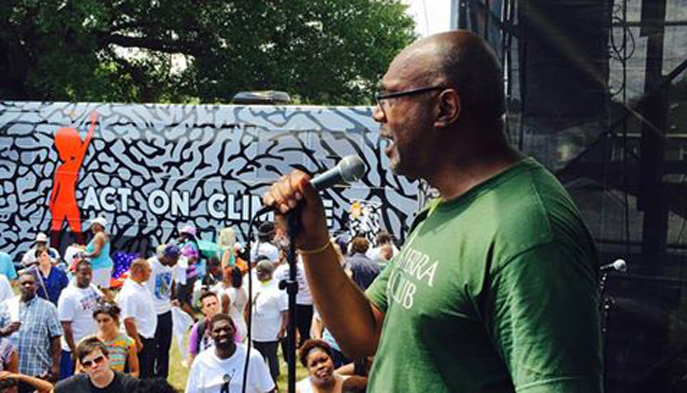
The day before, Sierra leaders and local residents marched with Mardis Gras Indians (in this case, the Ninth Ward Hunters) through the neighborhood to the Sanchez Senior Center. Below, a member of the Ninth Ward Hunters in full costume.
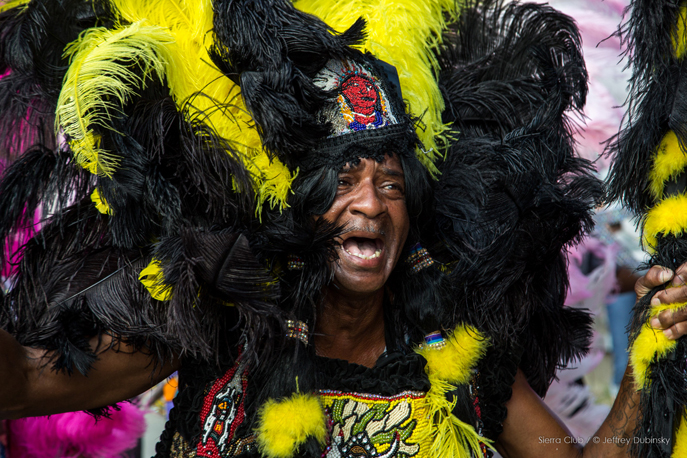
Photo by Jeffrey Dubinsky.
Among the marchers and speakers was local Sierra Club organizer Darryl Malek-Wiley, who has been working for the Sierra Club on environmental justice issues in New Orleans for over 30 years. "I've been working with so many of you for so long," he said. "I just want to express my sorrow for the many people who have passed away since Katrina due to stress and illness." That's Malek-Wiley, at left below, with Mair and Lower 9 Resilience Festival executive director Kim Ford.
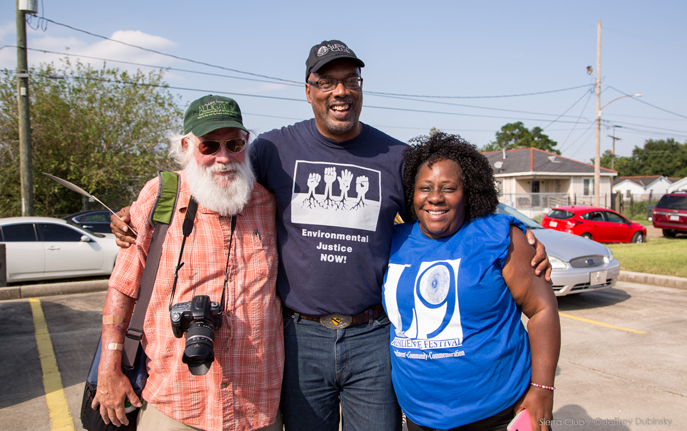
Photo by Jeffrey Dubinsky.
A candlelight vigil was held the following evening at the Sanchez Center, wrapping up the Lower 9 Resilience Festival events marking the Katrina 10-Year commemoration.
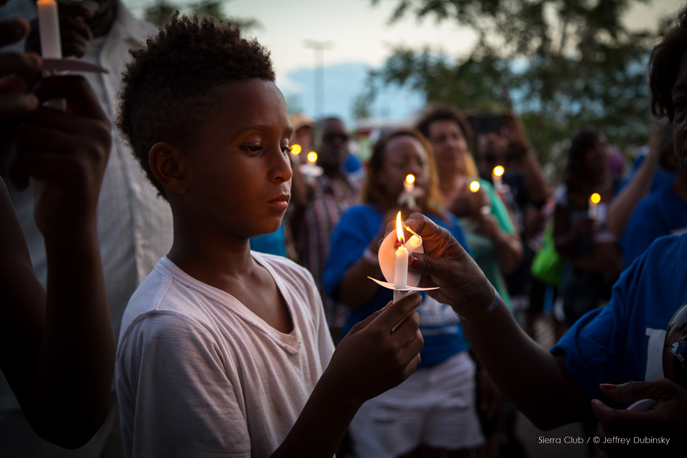
Photo by Jeffrey Dubinsky.
Mair, Brune, and a bevy of other Sierra Club leaders spent several days in New Orleans leading up to August 29, and were there when President Obama visited the city earlier in the week. "President Obama said that there were lessons learned from Katrina," Mair says. "The lessons were already known -- that there was separate and unequal treatment due to race and politics. The Lower 9th and 7th wards are still not rebuilt, and people have been unable to move back." Below, a derelict house in the Lower 9th Ward.
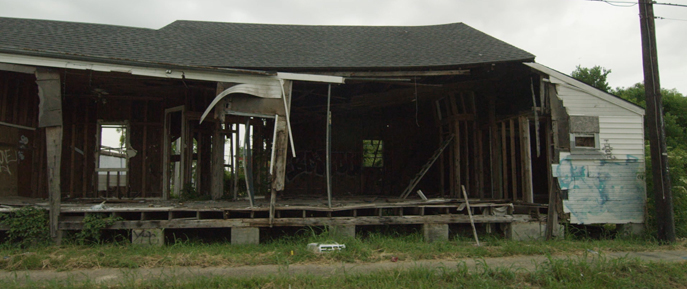
Mair says that in the aftermath of Katrina, the Stafford Act -- a federal law designed to provide "an orderly and systemic means of federal natural disaster assistance" -- was invoked, allowing the Federal Emergency Management Agency (FEMA) to take control and allowing the agency to suspend state and federal environmental laws and bypass community involvement in how the government was responding to the crisis.
"Hundreds of thousands of African Americans were dislocated and not allowed to return due to federal policy and unequal access to federal disaster funds to rebuild their properties," Mair says. "The Lower 9th Ward, formerly a community of 18,000 people, is now reduced to just over 6,000. Regular people in the neighborhood have stepped up to defend their homes from bulldozers, rebuild in a sustainable way, and reconstruct damaged wetlands. But the bulk of redevelopment funds given to the City of New Orleans have gone to the more affluent high ground, not to neighborhoods like the Lower 9th. The aid has not trickled down."
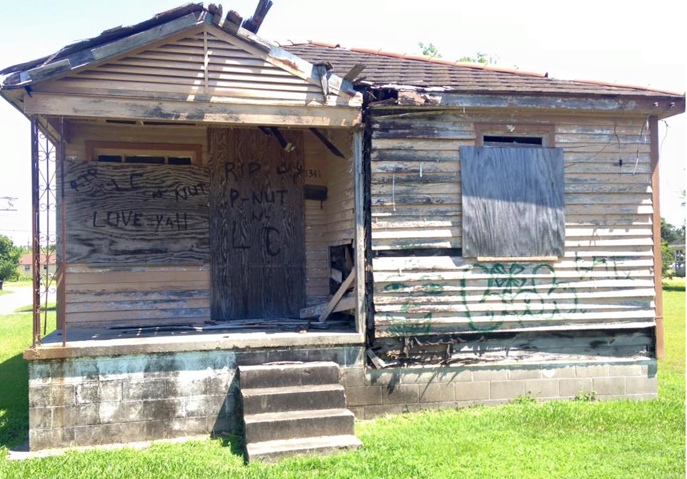
Mair adds that the manner in which the Stafford Act is being deployed is destroying the largest teachers' union in the state of Louisiana. "Whereas before Katrina the Lower 9th Ward had four elementary schools, a middle school, and a high school, all with unionized teachers, there is now a single K-12 charter school with non-unionized staff," he says. "There has been an intentional transformation away from working-class, blue-collar jobs and a unionized work force into a low-paid, non-union labor force that does not look demographically like the community. And because of these and other conditions, the locals have adopted the cry, 'Make it Right!'
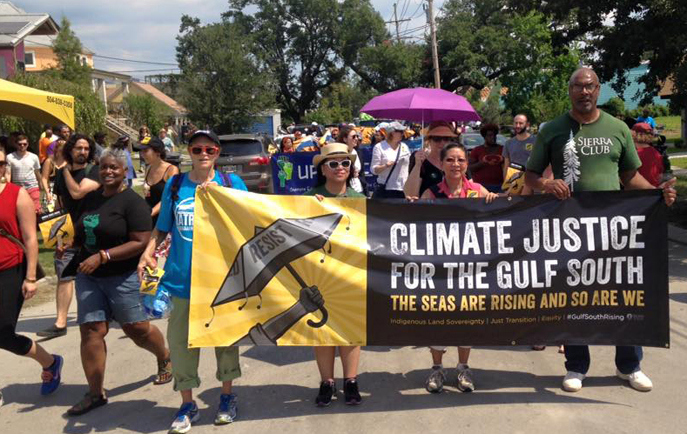
"We were there, on the ground, with the people on August 29," Mair says. "Michael Brune and I were accepted, welcomed, and invited in. I spoke at a historically black college. Then we were invited to speak in front of 5,000 people at the Hunter's Field rally. This was a moment where people on the ground said, 'Listen to the Sierra Club.' We rallied to their standard and they rallied to us. It was a proud moment for the Sierra Club. This was where we needed to be."
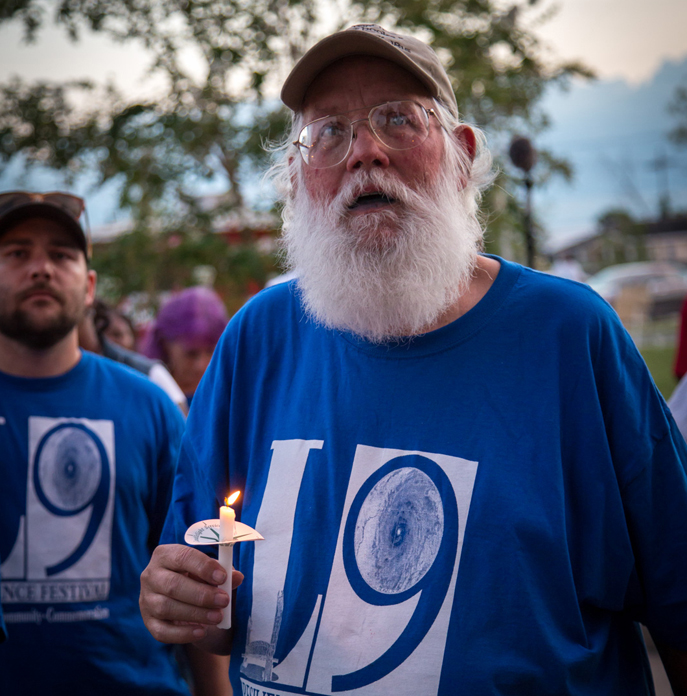
Photo by Jeffrey Dubinsky.